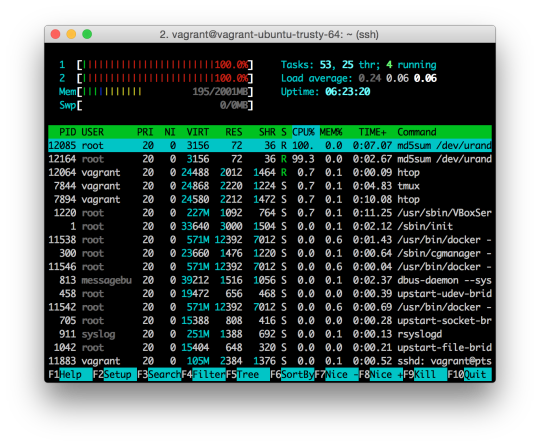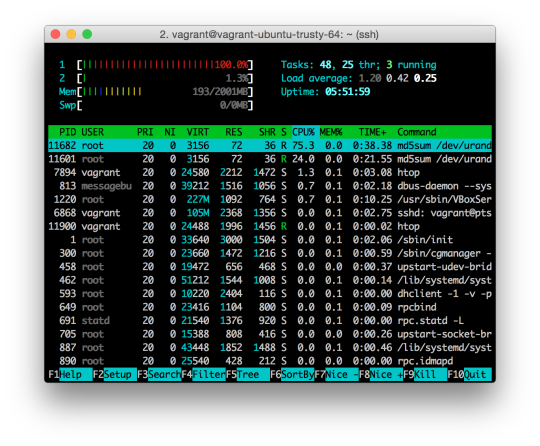Using cgroups with Docker on Ubuntu 14.04
As I was working on my upcoming presentation at ApacheCon, I was playing a little bit with cgroups inside Docker.
What I found was that there aren’t a whole lot of documentation on this, so I figured I put together a quick blog post about it.
Enable the LXC driver
Assuming you already have Docker installed on Ubuntu 14.04, you will still need to enable the LXC driver.
To do this, you will need to do the following
$ sudo apt-get install -y lxc
$ echo 'DOCKER_OPTS="--exec-driver=lxc"' \
| sudo tee -a /etc/default/docker
$ sudo service docker restart
Spin up two containers without cgroup policy
Let’s start by launching two containers that each will max out the CPU (by running md5sum /dev/urandom).
$ docker run -d busybox md5sum /dev/urandom
$ docker run -d busybox md5sum /dev/urandom

As expected, we can see that these containers fully utilize one core each.
Spin up two containers with cgroup policy
Now let’s put the new LXC options to use by adding two cgroup policies. What we’re looking to do is to the same workload as before, but run them on the same core. We would then expect them to occupy 50% of the core each. However, we want to give one container 75% of the CPU share, and the other only 25%. To accomplish this, we use ‘cpu.shares’ to divvy up the CPU and ‘cpuset.cpus’ to lock the containers to the same core.
Start container with low priority:
$ docker run -d --name='low_prio' \
--lxc-conf="lxc.cgroup.cpu.shares=250" \
--lxc-conf="lxc.cgroup.cpuset.cpus=0" \
busybox md5sum /dev/urandom
Start container with high priority:
$ docker run -d --name='high_prio' \
--lxc-conf="lxc.cgroup.cpu.shares=750" \
--lxc-conf="lxc.cgroup.cpuset.cpus=0" \
busybox md5sum /dev/urandom

As you can see, it worked! Happy hacking!
Update: For more details about how to use Docker with Cgroups, please take a look at my blog post Manage Docker resources with Cgroups over at CloudSigma’s blog.